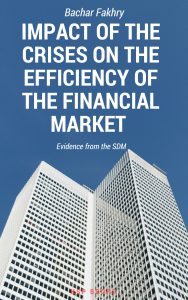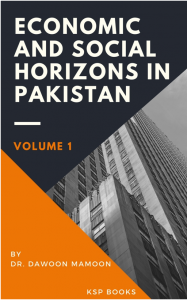Synopsis
(Ch.1) This Chapter analyzes and highlights the most practised forms of corruption in public hospitals of Douala metropolis in Cameroon, namely corruption with theft and that without theft. The results of our analyzes show a predominance of the form without theft, this regardless of the hospital, and this allowed us to classify hospitals based on the dominant form. It appears that the General and Deido Hospitals are health facilities where corruption without theft is the least and the most practiced respectively, while the Cité des Palmiers and New Bell hospitals are those where corruption with theft is the least and the most practiced. An estimate through odds ratios revealed for instance that the odds would be about 5.46 times higher that the form without theft is not practiced at the General hospital compared to other hospitals, and about 11.11 times that it is practiced at Deido hospital compared to all hospitalsh.
(Ch.2) The problem that arises is how the State official in a monopoly situation maximizes the value of bribes collected, by selling public services to users? To answer this question, we show that the State agent in a monopoly situation can discriminate users according to their characteristics in order to collect more possible bribes. The Shleifer and Vishny’ simple monopoly model is therefore limited. The survey of patients of nine public hospitals in Douala revealed the existence of two forms of corruption at consultation: corruption without theft and corruption with theft. An evaluation of maximizing the earnings of medical doctors using odds ratios, showed that in the pursuit of these gains and whatever the form of corruption practiced, the State agent plays not only on amounts of bribes paid, but also on users’ characteristics. However, for amounts between 3,000 FCFA and 5,000 FCFA, our results revealed that the doctor will tend to practice the form of corruption without theft on men, the wealthiest, the learned and the old where he/she would draw the greatest possible gain.
(Ch.3) The problem that arises is how the State official in a monopoly situation maximizes the value of bribes collected, by selling public services to users? To answer this question, we show first that in the case of health care provision, the Shleifer and Vishny’ simple monopoly model which highlights two forms of corruption (with theft and without theft) is limited insofar as it underestimates not only the value of bribes likely to be collected, but also the loss of income that corrupt practices cause to public services. Our model rather reveals that the State agent in a monopoly situation can discriminate users according to their characteristics in order to collect more possible bribes. Indeed, our model shows that when a medical doctor maximizes its earnings and whatever the form of corruption practiced, he plays not only on amounts of bribes paid and a part of the official price, but also on users’ characteristics. However, for some amounts the State agent will tend to practice the form of corruption without theft on certain users’ characteristics where he/she would draw the greatest possible gain.
(Ch.4) This chapter deeply analyzes the characteristics of corrupters during consultation in the Douala public hospitals, as well as the amounts of bribe they pay. A survey of patients in these hospitals reveals that the majority of bribes paid during consultation is between 1,000 and 3,000 CFA Francs, interval which corresponds to the 25th and 75th percentile of the amounts of bribe paid respectively. Our estimates indicate that for the amounts of bribe paid falling within this interval, it appears that the rich, the women, the older and the more educated are more likely to corrupt practices. However, when such amounts are set outside of that interval, the amounts of bribe paid and the characteristics of corrupters are no more the same as before. This contradicts for instance to some extent some theoretical results that do not include the setting of the level of bribe. It finally emerges from our analysis that with regard to each of the characteristics highlighted, correspond specific amounts of bribe paid, which are related to the socio-professional and socio-demographic categories of patients. In particular, senior staffs and business men / contractors would be most likely to pay bribes, whatever the amount.
(Ch.5) This chapter studies the characteristics of victims of corruption in the different public hospitals of the city of Douala in Cameroon. A survey of 407 frequent users of at least one of these hospitals allowed us to identify, using corruption indexes, the services mostly affected such as hospitalization, reception, medical certificate, illicit sales of drugs and hospitals in which they are located. Estimates obtained through odd ratios showed that the characteristics of victims vary not only from one hospital to another, but also from one service to another. For example, in the case of hospitalization, the victims are in general of male sex, aged 40 or below, and earners of incomes above 250,000F CFA, meanwhile in the case of illicit sales of drugs, men as well as women with incomes less than 250,000F CFA are affected. This allowed us to classify hospitals in terms of the magnitude of the phenomenon in the various services.
(Ch.6) This chapter highlights the initiative taken for the corrupt habits of health services suppliers and users of healthcare in Cameroon. An analysis through proportions reveals that generally in the regions, 83.33% of health workers take the initiative for the corruption, mainly justified by the prominence of some motives such as the deficit of nursing staff and drugs, the inadequate infrastructure and medical equipments, and the difficulties encountered in the implementation of the budget. An analysis through odds ratios for the entire country and by region revealed that in the health care market, the initiative for the corrupt act usually comes from the medical personnel in about 58% of cases, compared to the paramedical staff (33%). In 9% of cases, there is no conclusion between the first and the second. The use of a log-linear model through the Poisson regression enabled us to highlight the characteristics of patients in regions where the corrupt act is initiated by them. Indeed, the women, the younger and the workers are most prone to corrupt actions. However, the residential environment (urban or rural) does not influence the corrupt practices.
Contents
About Author(s)
ISBN
978-605-7736-63-5
Date of Publication
December 15, 2019
File Size: 3940 KB
Length: xv + 131 pages
This work is licensed under a Creative Commons Attribution 4.0 International License.
















